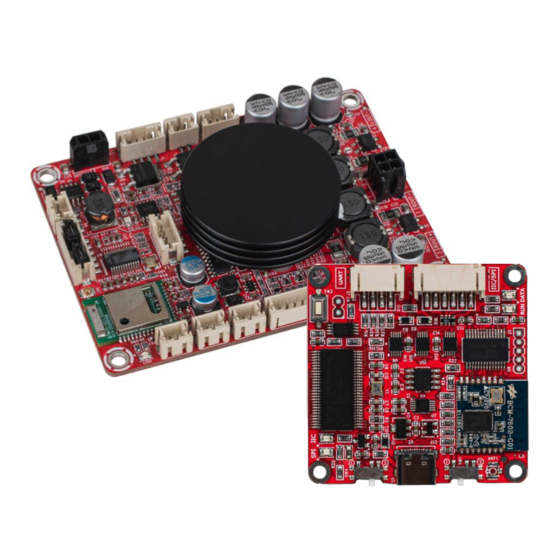
Table of Contents
Advertisement
Quick Links
Advertisement
Table of Contents

Summarization of Contents
KABX DSP Control Software Overview
Software Compatibility and Features
Compatible with KAB amps (BT 5.0/aptX HD), offers EQ, filters, compressor, bass effects.
KPX Programmer Role
Programmer is temporarily needed for saving presets to the amplifier.
KABX DSP Control Interface Explained
EQ Response Visualization
Graph displays EQ curve vs. frequency, allows Q/frequency adjustment.
Individual EQ Band Controls
Controls for each EQ band: on/off, Q, frequency, gain.
Global EQ and Output Settings
Bypass, Reset, Stereo/Mono output controls for EQ.
EQ Filter Type Selection
Choose filter types like PEAKING, HIGH PASS, LOW PASS, NOTCH for EQ bands.
Getting Started: System Requirements
Essential Hardware and Software
Requires KPX Programmer, KABX amplifier, USB cable, and Windows PC.
Connecting the KABX DSP System
KPX Programmer Mode Setup
Set the KPX programmer to "KABX" mode before connecting.
USB and Amplifier Connections
Connect programmer to PC via USB-C, and amplifier to programmer via 4-pin cable.
Launching the KABX Software
Start the KABX software; it should detect the connected hardware immediately.
Saving DSP Configurations to Memory
Understanding Setting Persistence
Changes are temporary unless saved to non-volatile memory.
How to Save Settings
Use the "Save" button to retain settings after power cycles; software prompts on exit.
Save Status Indicator
"KABX" means saved; "* KABX" means unsaved.
EQ Control Features
Independent Stereo/Mono EQ
Stereo (J2) and mono (J12) outputs have separate EQ control.
EQ Bypass Function
Disables all EQ bands without resetting values for testing.
EQ Reset Function
Resets all EQ values back to their default state.
KABX EQ Filter Type Explanations
Peaking Filter Details
Common filter for boosts; adjustable frequency, Q, and gain.
Notch Filter Functionality
Removes narrow frequency bands, ideal for resonance reduction.
Advanced EQ Filter Types
High Pass Filter Application
Cuts low frequencies, passes high. Protects tweeters/small drivers.
Low Pass Filter Application
Cuts high frequencies, passes low. Used for woofers/subwoofers.
HP/LP Filter Alignment via Q
Q value dictates the alignment of High Pass and Low Pass filters.
High and Low Pass Filter Slopes & Q
Filter Slope Characteristics
Slopes are 12 dB/octave; higher orders increase steepness.
Q Value and Filter Alignment Types
Explains Chebyshev, Butterworth, Bessel, Linkwitz-Riley Q values and alignment.
Compressor and Limiter Configuration
Accessing the Dynamic Range Compressor
Found under Options -> Dynamic Range Compressor.
Using Compressor as a Limiter
Achieve limiting by setting a high Ratio (max 1000).
KABX Effects Menu Options
Navigating the Effects Menu
Access via Options -> Effects on the main screen.
Enabling/Disabling Effects
Use oval buttons; green indicates enabled, grey indicates disabled.
Managing Effect Parameters
Enter parameters by typing; reset to defaults with the reset button.
Import and Export DSP Presets
Exporting DSP Configurations
Save current DSP settings to your computer via the export button.
Importing DSP Configurations
Reload saved settings; useful for multiple amps or A/B testing.
Troubleshooting and Support
Resolving No Audio Output
Check volume, mute status, and all connections.
Understanding Audio Artifacts
Crackling during EQ changes is normal, temporary, and doesn't affect performance.
Troubleshooting Software Connection
Verify power, programmer mode, cables, and run software as administrator.
Restoring Lost DSP Settings
Ensure settings are saved to non-volatile memory before turning off the amplifier.
















Need help?
Do you have a question about the KAB-250v4 and is the answer not in the manual?
Questions and answers